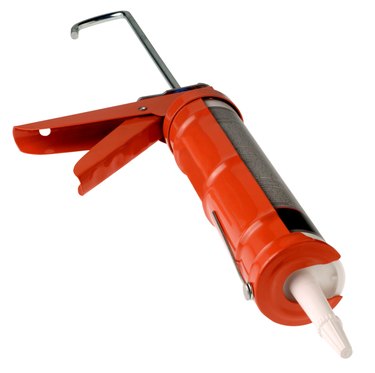
Silicone rubber sealant or adhesive bonds to many different surfaces, including metal, through a combination of mechanical and chemical adhesion. To understand the process of curing and bonding, it's necessary to understand the physical and chemical makeup of both the silicone rubber and the metal substrate during the application and curing process.
Mechanical Adhesion
Video of the Day
Mechanical adhesion occurs when one substance -- in this case, silicone rubber adhesive -- fills tiny voids in a second substance, such as metal. The friction of the adhesive against the edges of the small imperfections in the solid surface acts as a bond holding the two materials together. Mechanical adhesion works best when the metal substrate is clean and smooth, but not polished, since large irregularities and impurities such as oil and dust inhibit the connection between metal and sealant.
Video of the Day
Chemical Adhesion
Chemical adhesion occurs when the atoms at the surface of one substance bond with the atoms at the surface of the other in a chemical reaction. Silicone rubber is a polymer, or repeating chain of molecules. Each link in the chain contains atoms that are free to bond with atoms on the surface of the metal substrate, making the polymer a strong connection that can bend and flex while still adhering to the metal beneath it; a valuable property when external temperatures and moisture levels fluctuate.
Composition
Silicone rubber comes in different formulations that make it suitable for use on various metals and under diverse conditions. The different formulations contain chemical additives that change the composition and arrangement of the atoms on the ends of the silicone polymer that bond through chemical adhesion. They also affect the curing process and the physical properties of both the uncured silicone liquid or paste and the cured rubber sealant.
Curing Process
After application, silicone rubber adhesive changes physically from a malleable uncured product to a stiff, impervious finished product. This curing process is a chemical reaction precipitated by exposure to the moisture content of the air. In many formulations, the reaction produces acetic acid as a waste product, resulting in a distinctive odor. Curing starts with the formation of a thin, solid skin and continues down through the thickness of the adhesive layer over the course of a day or two until the silicone rubber is completely solid.